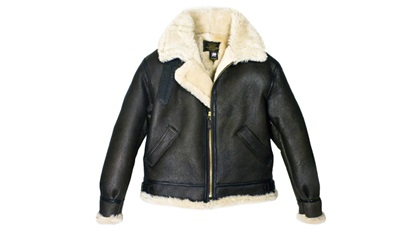Chilling adventures
Wintertime flying means you dress to egress, not to impress

Now you’re an adult, and you can do what you want. You can go outside in shorts, flip-flops, and a tank top in December in the Northeast, and Mom or Dad is not going to yell at you. But when flying in the winter, make Mom or Dad proud. Eschew the shorts and flip-flops and dress appropriately, even if the sun is shining and the ground temperature promises to rise above freezing.
In Chicago, where temps regularly stay in the teens in December and January, they know a thing or two about cold. “It can get colder here than the surface of Mars,” said Rod Rakic, a flight instructor and aviation consultant. At Chicago Midway International Airport (MDW), he said, snow piles up so high the airport has nowhere to put it—so they dump it into the backs of trucks carrying jet engines “and they vaporize the snow.”
“People ask me all the time, ‘Do you stop flying in the winter?’ Absolutely not,” said Rakic. “There are beautiful days to do flight training. You’ve gotta prepare for it. You’ve gotta have a sense of humor.”
Prep the airplane, prep yourself
If you are learning to fly in a colder climate, your flight instructor has certainly drilled you on the importance of preparing an airplane. The control surfaces must be clear and free of any snow, ice, or frost so that lift will not be compromised. The oil must be warmed up even before you start the engine so that, upon ignition, it can flow easily and do its job of lubricating myriad metal parts. Perhaps your flight school also uses heaters to protect airplane avionics from extreme cold. Hopefully, your flight instructor has warned you against using an ice scraper or a credit card to remove frost from an airplane’s windows, because the sharp edges will scratch the plastic windows.
While you’re doing this—warming up the oil, wiping frost off the leading edges—your normal preflight is prolonged. “You have to be well prepared to be outside in the elements to do the job necessary to preflight,” Rakic said. “If you’re not wearing the appropriate hat and gloves and coat, you’re probably gonna want to rush the preflight.”
Rakic’s rule for preflight wear: “If you can’t walk from the FBO to the end of the runway and back without getting cold, you are underdressed.”
In Grand Forks, North Dakota, the home of the University of North Dakota (UND) John D. Odegard School of Aerospace Sciences, the UND flight department cannot dispatch aircraft if the temperature is below freezing unless everyone involved has hats, gloves, and winter boots. Sarah Staudt, a graduate of UND’s flight program, remembers those teeth-chattering days somewhat fondly. “I had three layers of gloves,” said Staudt, who is chief flight instructor for the Aircraft Owners and Pilots Association’s Pilot Information Center. She said she wore “everyday” gloves of manmade materials, which provided enough manual dexterity for such tasks as checking the oil; over those she would wear waterproof ski gloves if she needed to move aircraft. In her survival kit she packed sheepskin mittens lined with wool. “We were very picky about our winter gear,” she said.
Sturdy layers of clothing are also necessary in the cockpit. Many pilots have been known to sport street shoes and pants more appropriate for an afternoon lounging on the sofa than an extended time spent in freezing temperatures. A cockpit can get very drafty, particularly if you fly older airplanes; and you should always dress and choose footwear for the possibility that you will be making an off-airport landing. Rakic calls this “dressing for the egress,” a concept taught in Civil Air Patrol operations. Layers are a good idea, particularly if they incorporate wool and an underlayer of a moisture-wicking material.
Then there’s the all-important survival bag. It should include, at a minimum, first-aid gear, snacks and water, fire-making tools, extra warm clothes including socks, and a personal locator beacon. Staudt said UND students would throw the engine blanket in the back along with the regular survival gear. The blanket could be used as another layer of protection against the cold, and the oil-spotted sections could be used to start a fire.
Staudt would wear a bright-yellow down coat whenever she flew in the winter. The bright yellow color meant she would stand out against the snow if she had to put the airplane down off airport.
Scrutinize that route
While some would argue that flight planning in the winter is no different than flight planning in warm temperatures—check the weather, check the route, check the destination airport—there are some cold-weather considerations. For example, instrument flying in the winter is a nonstarter if there’s icing in the clouds. Weather patterns must be carefully monitored, particularly in areas where snow squalls can pop up as readily as thunderstorms in the summer. Check current conditions on AOPA Weather delivered by Sirius XM (aopa.org/weather).
With much of the United States now populated, prolonged flights over desolate areas are not as prevalent as they once were. Still, flight paths should be scrutinized for unnecessary risks. Do you really need to fly directly across Lake Michigan? Perhaps a more circuitous route—one that affords off-landing possibilities that don’t involve freezing water—is in order.
For all your prep, sometimes flying just isn’t in the cards on a brutally cold day. Rakic remembers going to the airport one sub-zero morning, spending time deicing the airplane and cleaning the control surfaces. “It was all for naught; when I tried to start the engine it wouldn’t start,” he said. “The air was too cold to allow for fuel vaporization to happen properly.” Now that’s cold.
And if it’s that cold, you risk overpriming—or increasing the possibility of an engine fire if it does start. On such mornings, perhaps the best course of action is to go back to bed and wait until things warm up a bit. FT

 Leather bomber jacket
Leather bomber jacket Venture Heat heated vest
Venture Heat heated vest Karbon Sports jacket
Karbon Sports jacket

